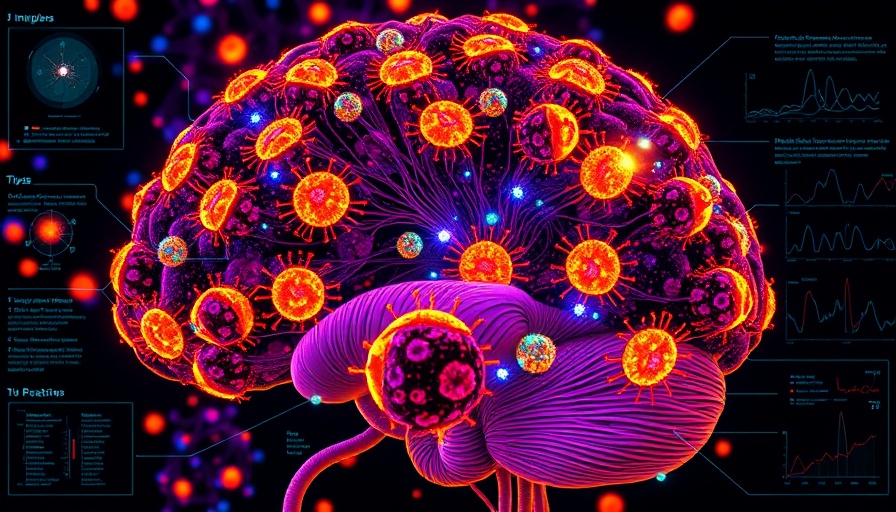
Understanding the Adolescent Brain: A Neural Landscape
The adolescent brain is a landscape of change and adaptation. Research has increasingly illustrated that critical areas, especially the frontal cortex, undergo significant transformations during this developmental window. This part of the brain is responsible for executive functions—actions that include decision-making, impulse control, and social interaction. However, this period of growth is also when individuals become vulnerable to neurodevelopmental disorders, such as schizophrenia and ADHD.
Microglia's Role: The Brain's Immune Guardians
Microglia serve as the brain’s immune cells, and recent findings from the University of Rochester’s Del Monte Institute for Neuroscience have discovered their pivotal role in shaping neural circuits during adolescence. These immune cells are not just passive defenders against pathogens; they actively participate in modifying synaptic connections that directly influence how adolescents learn, behave, and develop. Rianne Stowell, Ph.D., emphasizes that understanding how to manipulate these circuits opens up new avenues for treatments of developmental disorders.
Connecting Dopaminergic Circuits: A Breakthrough in Neuroscience
Dopaminergic circuits, which employ dopamine signaling to communicate between neurons, are essential for various brain functions including motivation and cognitive capacity. The University of Rochester's study showed that when adolescent mice engage in activities like wheel running, these circuits become active, which in turn signals microglia to enhance their connectivity. The researchers utilized optogenetics to demonstrate how microglial cells respond to heightened dopamine activity by forming new axonal boutons, critical points for neuronal communication.
This newly formed connectivity suggests that microglia play a significant role in fostering the resilience of neural pathways. Not only do these cells respond quickly to shifts in dopamine levels, but they also facilitate structural changes that improve signaling efficiency.
Implications for Mental Health: A Fresh Perspective
Given the connection between microglia and neural circuit enhancements, there are significant implications for mental health treatments. As understanding of these mechanisms broadens, it could lead to non-invasive therapeutic strategies targeting microglial functions to manipulate brain circuits positively. This is particularly important for individuals at risk of developing mental health disorders, as early intervention could pave the way for healthier developmental outcomes.
Future Trends in Neuroscience and Mental Health Treatment
The discoveries surrounding microglia and adolescent brain development will likely shape future research trajectories in neuroscience. Greater understanding of how modulation of immune activity can improve brain health opens doors for innovative treatments in neurodevelopmental disorders. New therapies could emerge focusing on lifestyle interventions that naturally enhance microglial function, potentially involving physical activity and social engagement, providing a holistic approach to health and wellness.
Emotional Connections: Learning About Our Brains
This research isn't just fascinating for scientists; it offers valuable insights for parents, educators, and healthcare professionals who are deeply invested in adolescent development. Knowing that immune responses can shape brain health emphasizes the importance of nurturing environments that encourage physical activity and emotional support within communities.
Moving Forward: Actions We Can Take
Given the profound implications of these findings, communities should strive to create more engaging environments that promote physical health—such as recreational activities that foster both physical exercise and social interaction. Understanding the role of microglia can empower community health and wellness initiatives, allowing us to prioritize mental and physical health across generations.
If you wish to dive deeper into how you can contribute to community health, look for local health and wellness events, and engage with programs focusing on fitness and mental well-being. Each step we take towards understanding these brain mechanisms can transform wellness initiatives into vibrant community resources.
 Add Element
Add Element  Add Row
Add Row 




Write A Comment